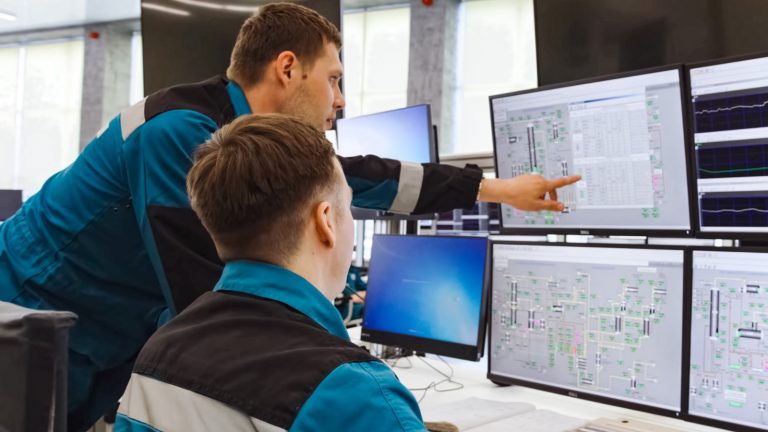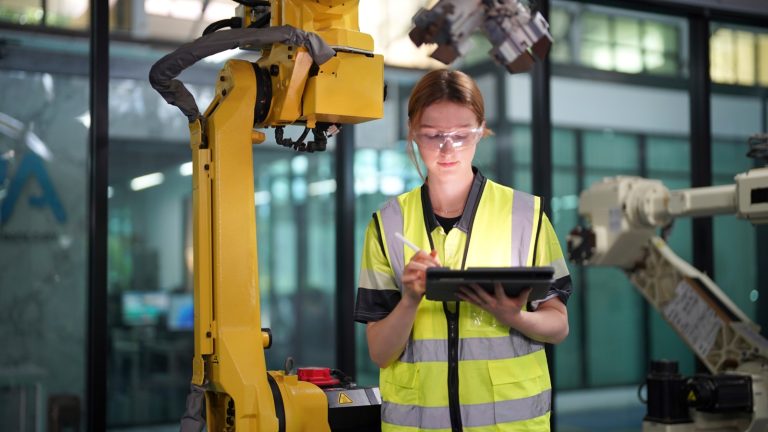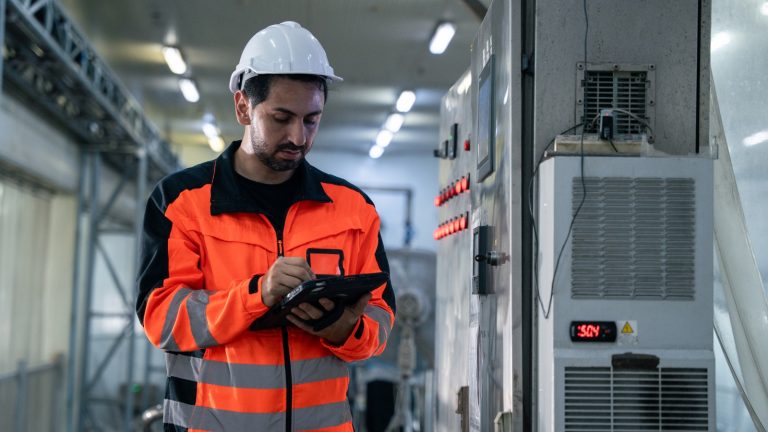If they do not remain competitive, how can manufacturers in this age be able to deliver faster, better, and more cost-efficient products to the marketplace? Everything is possible until the productions get paused due to challenges such as inconsistent quality, unplanned downtime, and disconnected data systems. Not to mention, these are the culprits behind draining productivity and profits. Step into the age of ‘Real-Time Monitoring’ in manufacturing, where all these issues can be solved through a transformative advantage.
In this article, we explore what real-time monitoring in manufacturing means when productivity and profits are concerned.
We reveal
- What Real-Time Monitoring Means in Manufacturing
- Why Real-Time Monitoring in Manufacturing Matters: The Benefits
- How Real-Time Monitoring in Manufacturing Works: Key Components and Technology
- Implementation of Real-Time Monitoring in Manufacturing: Best Practices and Common Challenges
- Cerexio Solution for Real-Time Monitoring in Manufacturing
- From Reactive Approach to Proactive with Real-Time Monitoring in Manufacturing
- FAQ about Real-Time Monitoring in Manufacturing
What Real-Time Monitoring Means in Manufacturing

- Real-Time Monitoring in Manufacturing signifies the process of the continuous gathering, processing, and visualisation of large data volumes from various devices such as sensors, machines, and production systems as soon as they occur.
- The best characteristic of this concept is that it takes out the necessity to wait to receive end-of-shift reports or hand-entering of data. This way, plant managers could view real-time performance measures ranging from output rates, yield rates, machine uptime, and scrap levels.
- How is this a unique approach? In contrast to traditional monitoring, where reviewing data on a regular basis after it happens, this new concept, real-time monitoring, can track every second of production.
- This is an outstanding strategy as it makes the way for early discovery of gaps, allowing teams to take measures to correct them before problems swell into much bigger issues. From temperature changes to unexpected slowdowns, every abnormality is on the screens of project managers as soon as it occurs.
Key components typically include:
- Data collection systems are advanced enough to capture sensor and equipment data.
- IoT-enabled devices pave the way for cross-machine connection.
- Dashboards and analytics tools are there to visualise KPIs in real time.
- Mechanisms have been implemented automatically to inform teams when they deviate from their goals.
Collectively, these parts form a dynamic digital perspective of industrial activities and extend a helping hand for the manufacturers to enhance accuracy, control, and productivity.
Why Real-Time Monitoring in Manufacturing Matters: The Benefits

The advantages of real-time monitoring in manufacturing go well beyond just offering basic visibility. It simply carves a solid foundation for digital transformation throughout the industrial environment from A to Z.
Minimised Downtime
Since this gives a hand to continually monitor equipment health and performance, teams receive the chance to detect possible issues much earlier. It also creates the space to initiate preventative maintenance before problems occur. This significantly brings down the unscheduled stoppage levels.
Improved Productivity
Real-time data actually represents some hidden bottlenecks, idle moments, and inefficiencies, and they are frequently overlooked in batch reporting systems. With this knowledge, production managers are able to rapidly change operations if they expect to gain optimal production.
Enhanced Quality Control
It offers a shortcut for continuous monitoring of process parameters such as speed, temperature, and pressure. This knowledge ensures that quality requirements are fulfilled at all stages. It is easy to spot defects and redefine them in the middle of the process, rather than after final inspection.
Faster Decision-Making
Since this comes with live dashboards, it enables supervisors and executives to smoothly arrive at educated decisions based on current situations rather than outdated information.
Optimised Resource Utilisation
Regular monitoring of assists helps with effective allocation of resources such as materials, labour, and energy by indicating where waste occurs.
Increased Customer Satisfaction
Reliable manufacturing performance lays the basis for predictable delivery timeframes and higher quality, which successfully strengthens brand confidence.
How Real-Time Monitoring in Manufacturing Works: Key Components and Technology

Sensors and Data Capture: Sensors are attached to the various equipment and production processes in the manufacturing workflow in order to be able to keep track of key parameters, including vibration rates, temperature levels, speed, pressure and torque. These sensors have the potential to bring continuous data streams to a system that lies in the central position.
Industrial Internet of Things (IIoT): IoT devices and gateways act as the connecting links to legacy machines and modern equipment, and they are the devices that enable seamless data flow.
Edge and Cloud Computing: Data is processed at the edge (near the machine) for immediate feedback or in the cloud for sophisticated analytics and long-term retention.
Real-Time Dashboards: Operators and managers have the opportunity to view live production KPIs in real-time. For example, cycle time, utilisation percentages, Overall Equipment Effectiveness (OEE), scrap rates, etc.
Alerts and Notifications: When a KPI goes down from its threshold, such as a temperature spike or motor vibration, the system can notify the authorities immediately via several forms of communication, including dashboard pop-ups, email or SMS.
Implementation of Real-Time Monitoring in Manufacturing: Best Practices and Common Challenges

Best Practices
Start with clear objectives- This means you need to begin the process by defining what you truly want to achieve before the deployment happens. It can be benefits like reduced downtime or higher OEE. If not, you may seek ways to achieve improved quality or maximised ROI.
Choose the right KPIs– It is always advisable to focus on measurable metrics, and they must align with your business goals. You need to understand that it is better to avoid tracking everything. Instead, prioritise data that actually drives action.
Pilot before scaling– Many manufacturers gain momentum when they begin with one production line or department, when it comes to testing data accuracy and workflow integration.
Ensure data accuracy– Since you do not wish to have misleading analytics, remember to validate sensor calibration and connectivity.
Empower your workforce– Give some weight to the importance of training operators and maintenance staff, as they are the ones who interpret dashboards and respond to alerts effectively.
Common Mistakes to Avoid
Data overload: Collecting too much data without providing useful insights is one mistake that could stress your teams.
Neglecting integration: If your technical teams fail to synchronise real-time monitoring with MES or ERP systems, the latter will create data silos.
Resistance to change: Some manufacturing organisations may experience cultural barriers, which can limit adoption if staff have not received any proper training or involvement directly.
Ignoring cybersecurity: In the end, it all becomes one consolidated ecosystem. This is why securing network infrastructure is challenging yet critical.
Cerexio Solution for Real-Time Monitoring in Manufacturing

All Cerexio developed software solutions are powered by Industry 4.0 digital capabilities such as AI, IoT, Sensors, Digital Twin, Predictive Analytics, etc., and they can easily offer the manufacturing domain a higher level of real-time monitoring facility. No matter how complicated your production to logistic lines are, our solutions like MES, WMS, Manufacturing Control Tower, Service Request Management System and all cover every detail with analytics instantly.
Trust Cerexio for real-time oversight into every corner of your production. Call for a free demo today!
From Reactive Approach to Proactive with Real-Time Monitoring in Manufacturing

Gone are the days, manufacturing relied on a reactive strategy to seek solutions for its pressing issues like machine failures. Since now, proactive management receives the spotlight in manufacturing asset management, and real-time monitoring acts as an ally to bring isolated processes into a connected, intelligent ecosystem where every decision is informed by live data.
FAQ about Real-Time Monitoring in Manufacturing
Real-time monitoring is what fuels smart factories when it comes to using real-time information for core tasks such as data collection, predictive maintenance, and production enhancement, conjointly with Industry 4.0 technologies.
Manufacturers in modern-day mainly utilise technologies such as MES software, IoT sensors, cloud analytics, and AI-driven dashboards to fulfil various tasks, including ensuring data protection, tracking and tracing performance, as well as improving manufacturing process visibility.
Implementing real-time monitoring comes with several challenges, such as high costs, data breaches, complexity in ensuring cybersecurity, and incompatibility with existing legacy systems.
